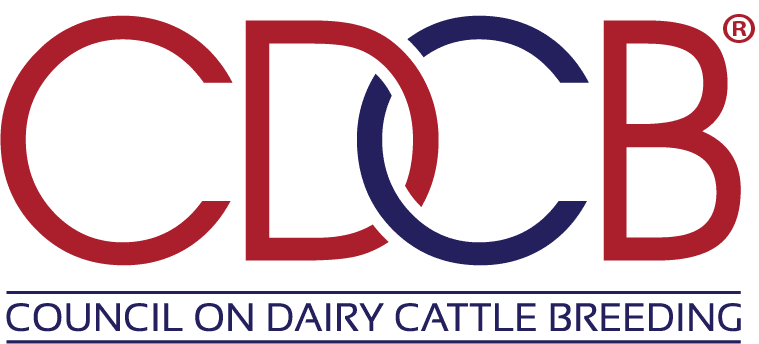Impact on U.S. Dairy
Genetic selection has contributed significantly to the improved productivity, efficiency, and well-being of dairy cattle worldwide through collaborative, continuous improvement and technology adoption.
Providing Key Nutrients Efficiently
Milk production contributes significantly to meeting the nutritional requirements of the world population. Cattle produce 81% of the world’s milk supply.
U.S. dairy cattle produce four times more milk per cow today than in 1945 and twice as much as 1970. Building up genetics and providing outstanding herd management are the keys to this superior production efficiency. The gains in total fat plus protein for Holsteins on Dairy Herd Information (DHI) since 1970 are shown below, along with the gain due to genetics. Genetic improvement has accounted for 62% of the fat plus protein increase in U.S. Holsteins over the last 50 years.
Increase in fat plus protein yield for U.S. Holsteins*
| Decade | Decade | Decade | Decade | Decade | Total | |
| Trait | 1970-1980 | 1980-1990 | 1990-2000 | 2000-2010 | 2010-2020 | 1970-2020 |
| Total gain in fat plus protein, per decade (lbs) | 127 lbs. | 219 lbs. | 284 lbs. | 131 lbs. | 277 lbs. | 1038 lbs. |
| Gain due to genetics (lbs) | 81 lbs. | 129 lbs. | 117 lbs. | 103 lbs. | 218 lbs | 648 lbs. |
| Percent of the change attributed to genetics | 64% | 59% | 41% | 79% | 79% | 62% |
*Cows in herds that participate in Dairy Herd Information (DHI)
The trend is similar for gains in milk yield. Since 1960, the average milk produced per cow per year has risen from about 13,000 pounds to 28,000 pounds for U.S. Holstein in DHI herds. In the figure below, the dark blue area shows the gains due to improved management while the light blue shows the gains made through genetic potential. Management and genetics work hand-in-hand. Parallel improvements in cow nutrition and management allow genetic potential to be expressed.
Influence of Management and Genetics on Milk Yield Gains

Foundation of Continuous Improvement
The remarkable increase in U.S. dairy productivity has resulted from processes founded more than 100 years ago. A critical step was the start of milk production testing in 1905. As the number of production records grew, so did pedigree recording and the opportunity to test progeny performance. Growth in breed association programs, the introduction of artificial insemination (A.I.), development of frozen semen, and more accurate genetic evaluation methods further advanced genetic improvement through the middle of the 1900s. The U.S. system became respected as the global standard.
Growth of U.S. Holstein Semen Exports, 1980-2021

The Genomic Revolution
Since 2009, dairy producers worldwide have had access to high-ranking U.S. genomic sires whose genetic evaluations are based on DNA markers of the performance of their milking daughters. The U.S. Department of Agriculture provided funding to sequence the first cow genome, worked with companies to create early genotyping techniques, and pioneered the development of genomic evaluations.
U.S. dairy producers quickly embraced the genetic potential of these younger sires. For female selection, genomic testing has become an important tool for mating, culling, and herd management decisions. The adoption of genomics further accelerated genetic and productivity gains.

Longevity, Fitness, and Feed Efficiency
For decades, milk and fat – and then protein – were the primary traits measured and evaluated. U.S. breeding goals expanded in 1994 with the introduction of Productive Life and Somatic Cell Score. Calving and fertility traits became available in the early 2000s. Since then, more health and fitness traits have been developed, including cow and heifer livability, disease resistance, and feed efficiency in Holsteins.
This expansion in traits has resulted in a more balanced breeding approach that is demonstrated in the national selection index, Net Merit $. CDCB publishes Net Merit plus three variations for producers to maximize genetic progress across the balance of traits that drive herd profitability for their milk market and management system.
Genetic relationships, or correlations, also must be considered. As an example, production and fertility are negatively correlated in farm animals. If selection programs emphasize yield and neglect fertility, there will be a decline in reproductive performance. In U.S. Holsteins, pregnancy rate in U.S. Holsteins declined from 1960 to 2000 with the emphasis on milk yield. That trend slowed in 1994 with the introduction of Productive Life and began to reverse in the early 2000s when direct selection for Daughter Pregnancy Rate became available.
Relationship between Milk Yield and Daughter Pregnancy Rate in U.S. Holsteins

